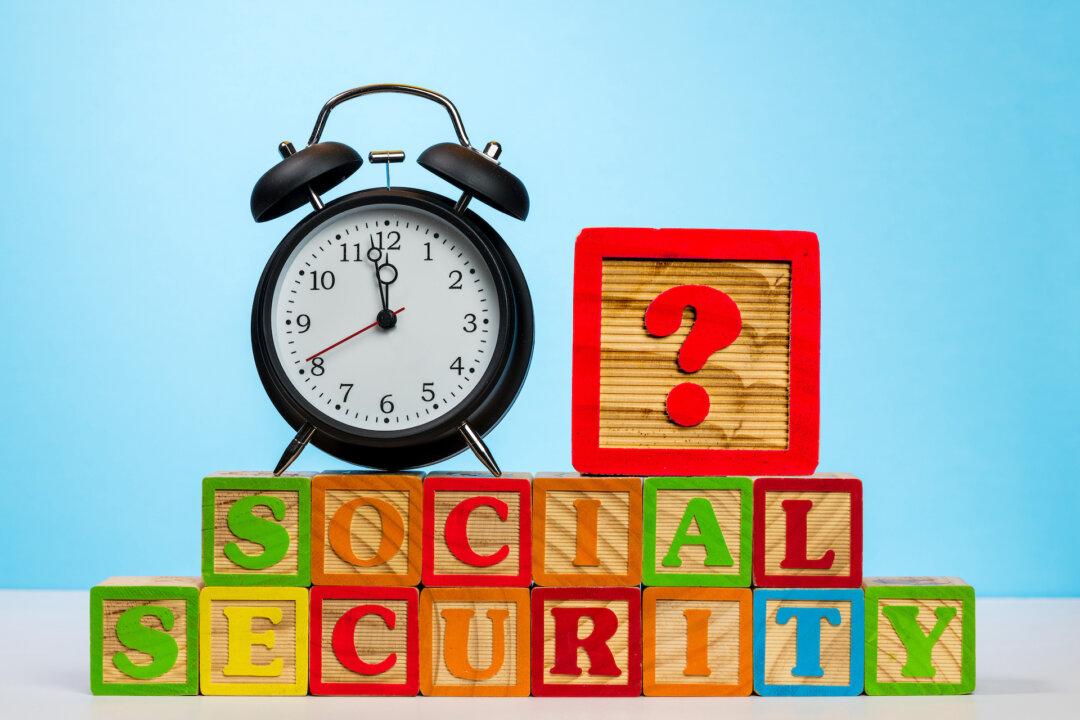Q: I am a 78-year-old recent widow. I got my own Social Security number when I was about 20. But since my husband and I started getting Social Security benefits about 15 years ago, the correspondence I got from the Social Security Administration showed my husband’s Social Security number with a letter “B” behind it. Somebody at a Social Security office once told me this meant I was getting wife’s benefits on his record. How does the letter “B” stand for a wife? And now that my husband has died, I notice that any mail I get from the SSA shows my husband’s number with a letter “D.” Does this mean “deceased?”
A: No, it doesn’t mean deceased. Believe it or not, it stands for “widow!” So you may legitimately wonder why in the world a “D” means widow. Shouldn’t it be a “W,” perhaps? I will use this column to explain the mysterious world of Social Security claim numbers. These numbers are sometimes referred to as BIC codes. BIC stands for “beneficiary identification code.”
First of all, what is a “claim number?” And how does it differ from a Social Security number? Almost everyone in this country has a Social Security number. It’s the number you give to your employer if you get a job, and it’s the number you would use to file an income tax return. It’s also the number that many government agencies and private companies use as a personal identification number for you. (The use of the SSN for personal identification is a topic for another column.)
But a claim number is the Social Security number on which you are claiming Social Security benefits. And it’s always followed by a little letter symbol to indicate the kind of benefit you have claimed. For many people their claim number is simply their own Social Security number with a letter symbol following it—usually an “A.” But some people claim Social Security benefits on another person’s Social Security record—almost always a spouse and sometimes a parent. So their claim number is the spouse’s or parent’s Social Security number followed by the appropriate claims symbol.
The little claims symbols were not assigned in any sort of meaningful pattern. In other words, the letter “R” was not used to indicate “retirement” benefits and the letter “W” wasn’t used to indicate “wife’s” or “widow’s” benefits.
Instead, the letters were essentially assigned alphabetically as benefits were added to Social Security law. Here is a list of the claims symbols used. It’s not a complete list.
No. 1: A—This claims symbol indicates you are getting your own retirement benefits.
No. 2: B—You are getting benefits as an aged (over 62) wife on your husband’s record.
No. 3: B1—You are getting benefits as an aged (over 62) husband on your wife’s record.
No. 4: B2—You are getting benefits on your husband’s record as a young wife (under age 62) caring for his minor child.
No. 5: B6—You are getting benefits as a divorced wife on your ex-husband’s record.
No. 6: C—You are getting benefits as a child on your parent’s record.
No. 7: D—You are getting aged (over 60) widow’s benefits from your deceased husband’s record.
No. 8: D1—You are getting aged (over 60) widower’s benefits from your deceased wife.
No. 9: D6—You are getting divorced widow’s benefits.
No. 10: E—You are getting mother’s benefits—paid to a widow under age 60 who is caring for the minor children of a father who has died.
No. 11: E1—Same as above, except you are divorced from the father.
No. 12: E4—You are getting father’s benefits—paid to a widower under age 60 who is caring for the minor children of a mother who has died.
No. 13: F—You are getting benefits as a dependent parent on a grown son or daughter’s Social Security account (very rare).
No. 14: HA—You are getting disability benefits on your own account. (Although sometimes the SSA shortens this to just “A.”)
No. 15: M—You don’t have enough work credits for regular Social Security, and you only qualify for Part B Medicare benefits.
No. 16: T—You are not insured for Social Security benefits, but you are eligible for Part A hospital coverage from Medicare. (See below for more information.)
No. 17: W—You are getting disabled widow’s benefits on your deceased husband’s account.
No. 18: W1—You are getting disabled widower’s benefits on your deceased wife’s account.
No. 19: More about the “T” code. In the past, the “T” code was reserved for those very few people who were not eligible for any kind of Social Security benefit but had paid taxes into the Medicare program. But when the full retirement age climbed beyond age 65, and people affected by that change started reaching that age, the SSA had to change their claims-filing rules.
Those rules say that you can file for Medicare at age 65 without having to file for Social Security benefits. And these folks had to be given a claim number. It couldn’t be an “A” BIC code, which again means you are getting retirement benefits, so they used the “T” code, and the definition was changed to “entitled to Medicare but not yet entitled to Social Security.”
That means the once little-used “T” BIC is now very common. There are currently millions of “T” beneficiaries. If you are one, meaning you took Medicare at 65 but are waiting until full retirement age, or maybe age 70 to file for Social Security, whenever you do that, your claim number will change from your SSN with a “T” to your SSN with an “A.”
Again, this list is not complete. It shows only the most common beneficiary codes. But “common” is a relative term. Many of the benefits listed above are infrequently paid. For example, you could almost count on your hands the number of people getting “F” (parent’s benefits) or “W1” (disabled widower’s benefits).






